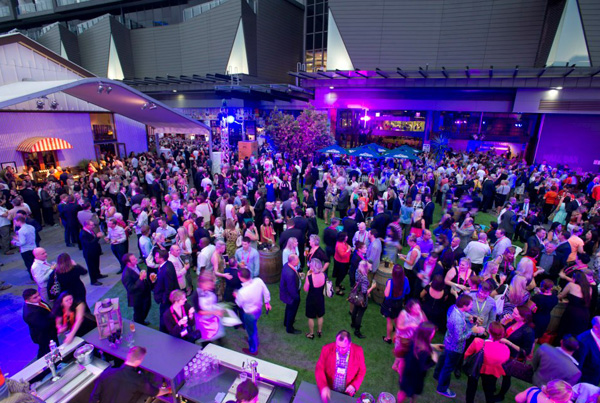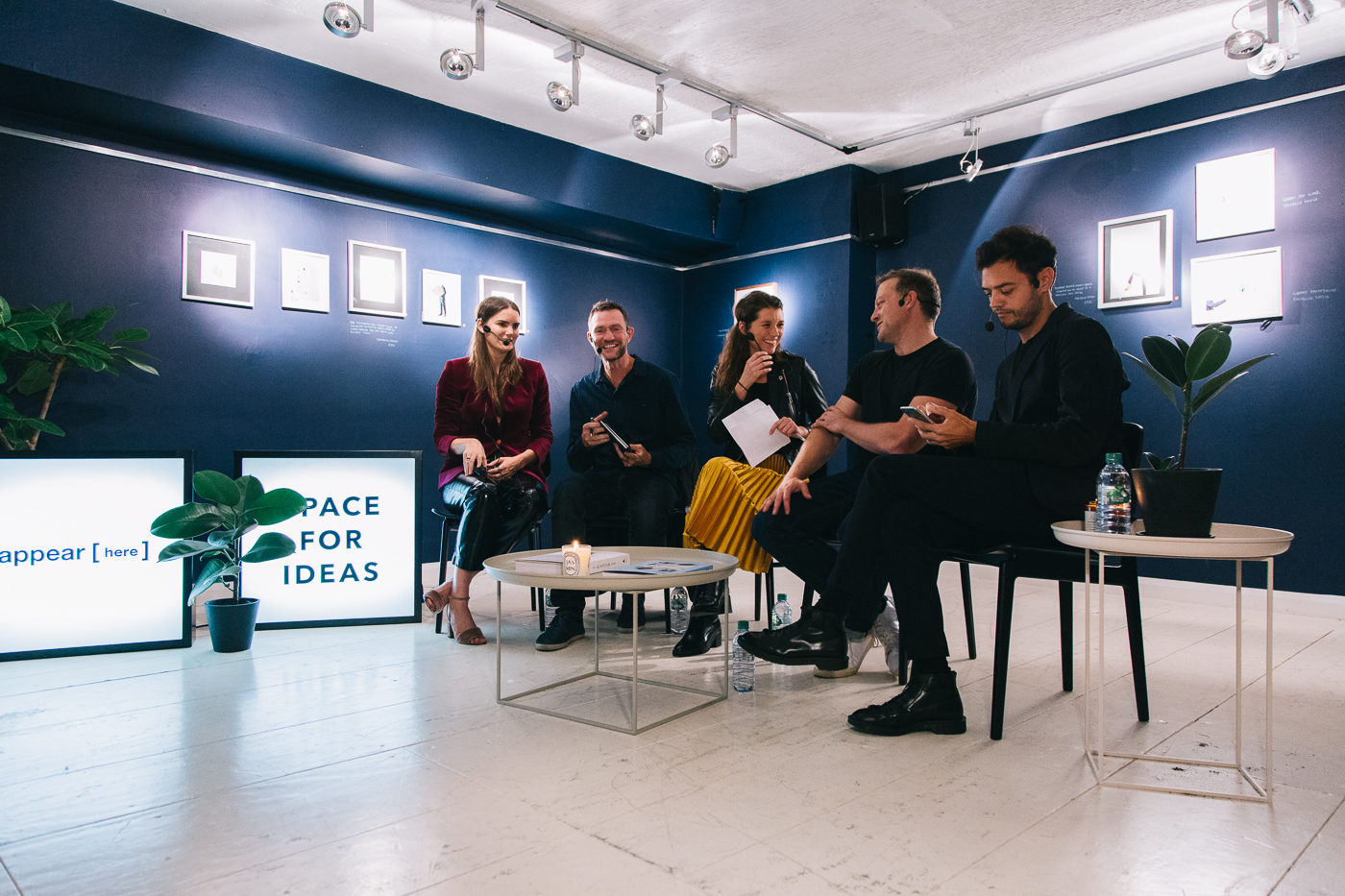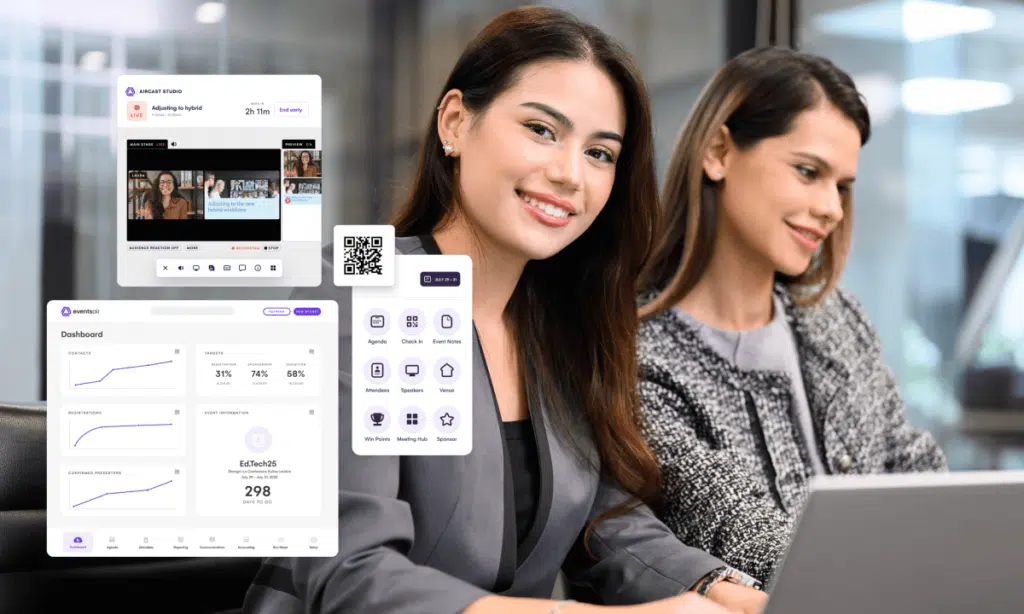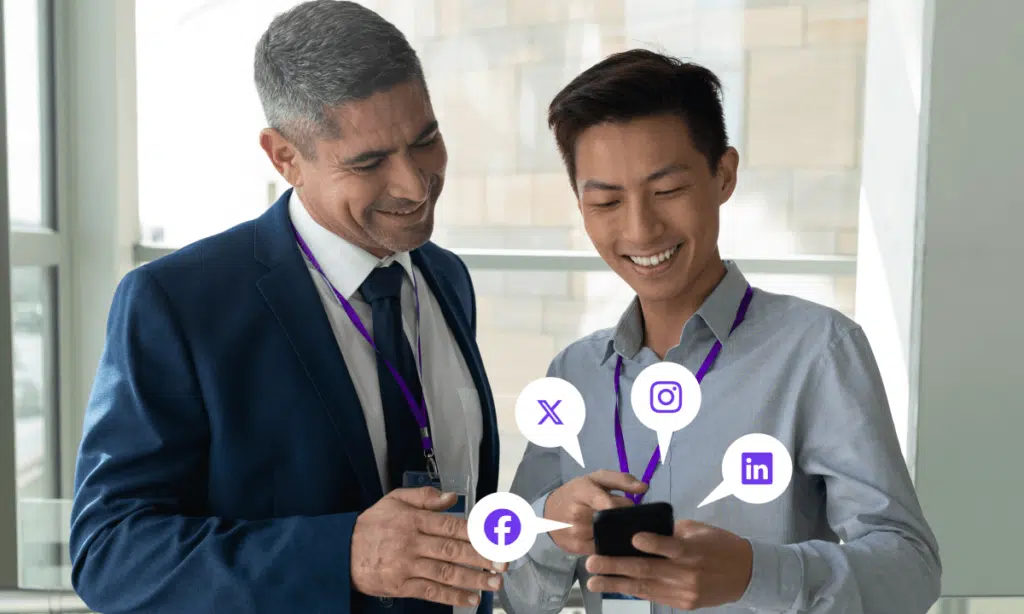Boost Onsite Engagement through Collaboration

If a good concept and detailed planning are the bread and butter of successful events and your delivery is the gourmet filling, then attendee engagement is the secret sauce. And it looks like everyone wants to know the secret, because 91% of event professionals consider increasing their attendee engagement as an important priority for their organization.
While it’s worth giving extra attention to providing your attendees with engagement opportunities, it’s equally important that anything you add to your schedule or space fits naturally with the flow of your event or meeting. Any gimmicks introduced solely to get your attendees’ attention will come across as contrived and be more likely to generate eye-rolls than engagement.
Collaboration can be a simple but effective way to increase engagement at your events and boost attendee and client satisfaction. Attendees who directly or indirectly contribute to your program automatically level up from passive recipients of information to active participants. And event planners and meeting organizers may just see another benefit from building collaborative elements into their events: it can extend your impact without significantly changing your workload. Here’s how.
Start at the Finish
You have a vision for your event – you’ve planned it with a specific outcome in mind. It’s not necessarily the same one your attendees have in mind when they register. But they know exactly what they want to get out of your event. Do you?
It’s easy enough to find out, and by understanding your attendees’ criteria for a successful event, you’ll be better positioned to deliver one. Involving participants in your planning process will also get them into engagement mode long before they arrive onsite.
The simplest approach is to send out user surveys by email or include them as part of the registration process. You can also use social media channels to gather information either directly, through setting polls or asking questions to your audience, or indirectly, by profiling your audience to identify their broader interests.

Collaborative Construction
As you build your event program, factor in the ideas you’ve collected from user surveys and local industry consultation. Think outside the box:
- Did last year’s attendees participate in the post-lunch creative exercises, or were they drowsy and disengaged?
- Were the breaks too short for attendees to recharge, or too long that they lost focus?
- Would an innovative activity at a recent local event translate well to your global audience?
- Could your exhibitors and sponsors help you generate more buzz by collaborating at the event and on social media?
Ideally, you’ll also build audience ideas into the design and content of your event website. It will be the first touchpoint for many prospective attendees and an early touchpoint for all of them, so tailoring it based on feedback is a solid investment. You can even ask your attendees for permission to use their photos instead of stock imagery.

Focus on Engagement over Information Transfer
Your attendees learn more when they’re actively involved – when they can speak and be heard, rather than just listening. So, another way to boost engagement is position your presenters as facilitators rather than speakers by providing ways for the audience to influence the session’s direction through speaker interaction. Audience live polling lets attendees put themselves in the picture, and event mobile apps often include a feature enabling audience members to ask questions the speaker can answer in real time.
If you’re conducting panel discussions, invite your attendees to volunteer as a panel member of facilitator. If your panel captures the diversity of your audience, attendees are more likely to identify with the speakers, and the speakers are more likely to seek others’ opinions to accurately represent their industry. You can also create collaborative engagement in the more social aspects of your program, with innovation challenges for teams networking opportunities like speed networking dinners, and even competitions that bring together your exhibitors.

Physical Spaces as Engagement Enablers
Event attendees usually find ways to connect with each other, even without your input. To extend their engagement across your event, simply provide enabling mechanisms and physical spaces that are conducive to collaboration outside of your formal programming.
This approach can be as simple as providing an inviting and exciting communal area that draws attendees from their breakout sessions back into the core space. Coffee and snacks can help!
You may also want to set aside some business areas for attendees to quickly answer a work call or respond to a few emails. While most registrants would rather forget about their day-to-day tasks and focus on their personal or professional development goals, it’s almost a given that at least a few will need to deal with urgent issues that can’t wait until they’re back on deck. Allowing space for this ensures that a necessary interruption to one attendee’s day doesn’t blow out to become an unnecessary interruption for all guests.
Break Down the Barriers
Collaboration boosts engagement, so why set boundaries? There’s no reason why you can’t continue to collaborate beyond the event in both time and space, which will open you up to a greater audience while boosting onsite and brand engagement.
Here are a few ideas you can try:
- Digitally “fly in” a high profile presenter, using a video conferencing tool like Zoom.
- Livestream some of your sessions to a global audience, with EventsAir and Zoom.
- Schedule speakers with diverse backgrounds in terms of their careers and locations.
- Prominently display a social media wall in your collaboration space, with feeds from all your social media channels.
- Lend a collaborative angle to your gamification by allocating bonus points to collaborative activities.
- Create a yearbook for your annual event or invite participants to guest edit your newsletter.
If you’re not convinced it’s a good idea to encourage mobile phone use during your event, it’s worth knowing that two-thirds of your guests are using them anyway. You may as well use it to everyone’s advantage, by blending the physical and digital spaces to create an immersive event experience.
Creating Engagement Together
There are many ways you can encourage attendees to be more actively involved in your event throughout all stages of planning and onsite delivery. When guests are invited to collaborate with meeting organizers, hosts, and each other, they can help you create more successful events.
For more ideas on creating an engaging experience for your delegates, talk to one of our EventsAir consultants or check out our videos.
EventsAir has been at the forefront of Event Technology and Innovation for over 30 years, continually pushing the boundaries of what an event management platform can do. Built by event planners for event planners, EventsAir is a secure, scalable, cloud-based solution that can manage everything from in-person, virtual to hybrid conferences, meetings and events in a single online platform – anywhere, anytime and on any device. In use in over 50 countries by multi-national corporations, professional conference organizers, government departments and tertiary education institutions, EventsAir is also used in global congresses such as G20, APEC, CHOGM and ASEAN, as well as sporting events like The Olympic Games, World Rugby, Commonwealth Games and Pan Am Games. EventsAir is trusted by event professionals around the globe. For further information, visit www.eventsair.com




